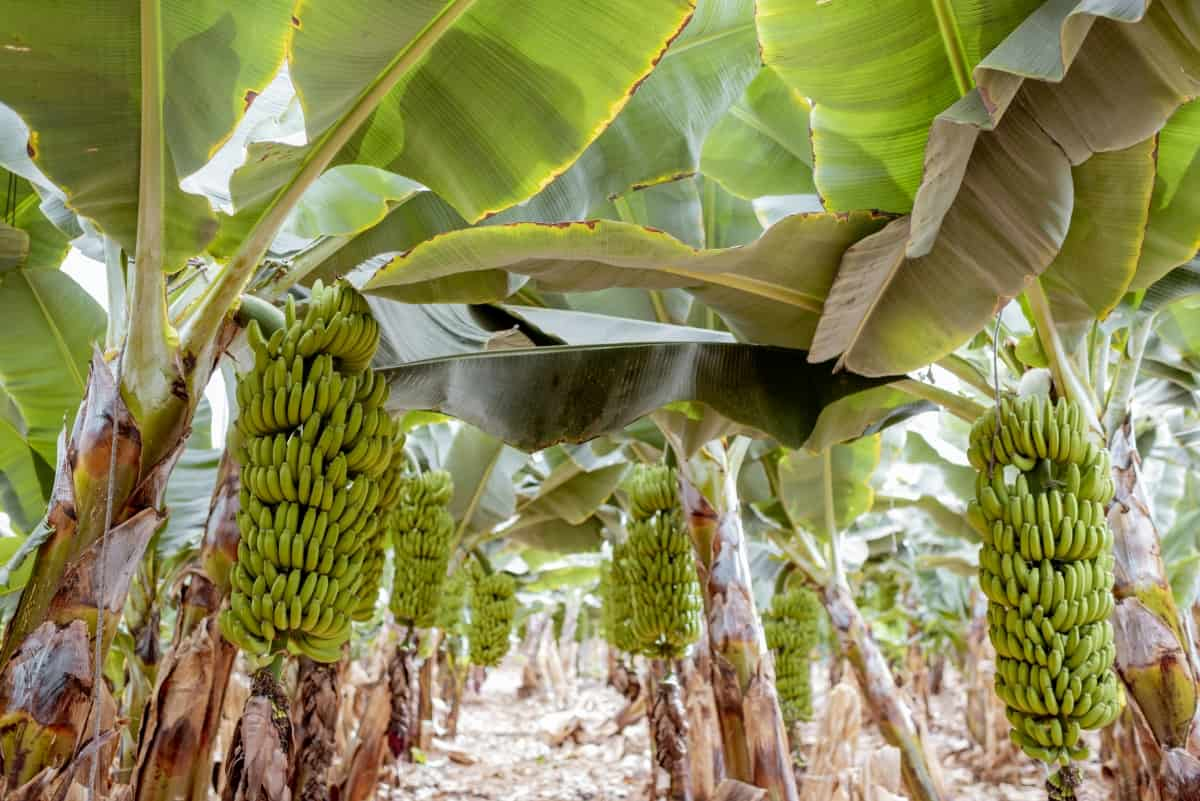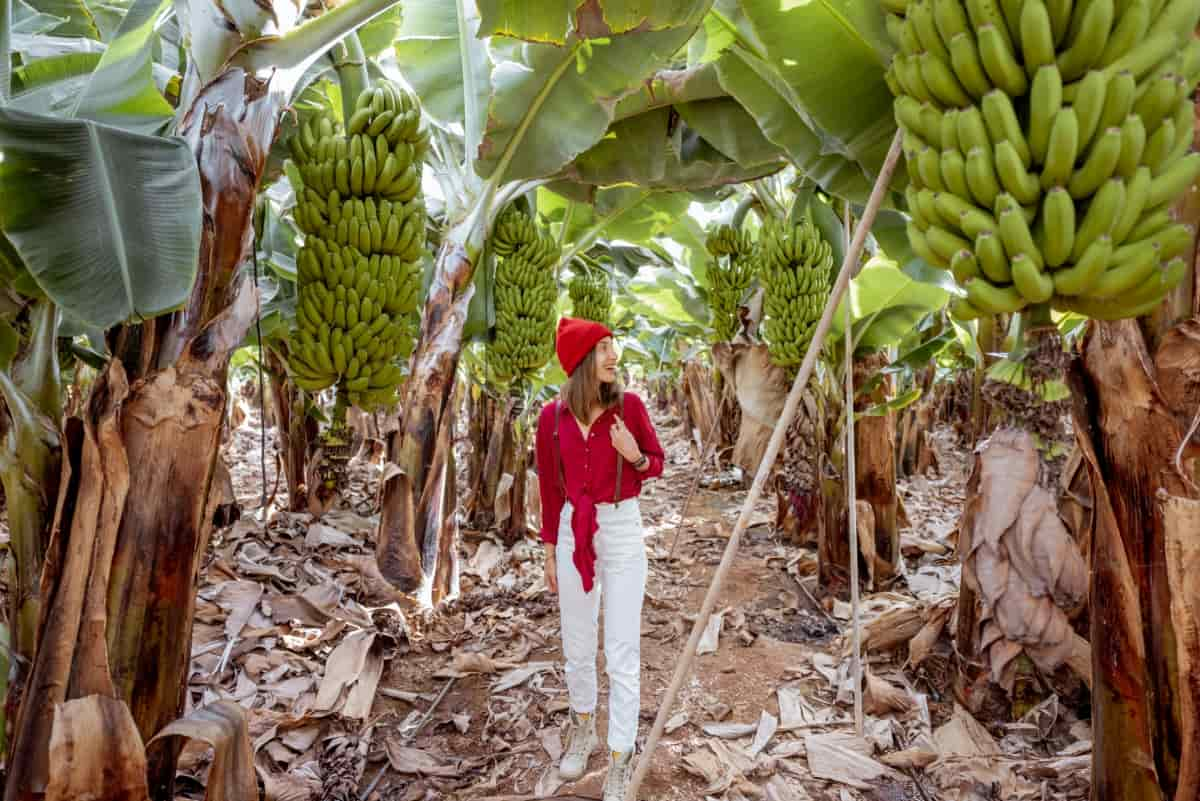A detailed project report offers a comprehensive analysis of the economics of cultivating bananas on a one-acre land. This guide provides insights into the production costs and conducts a thorough profit analysis, enabling a better understanding of the financial aspects of banana cultivation on a small scale.

1-Acre Banana Farming Cost and Profit
Introduction to Banana Cultivation/Farming
Banana cultivation, also called banana farming, is an agricultural activity that grows bananas for commercial use. Bananas have a high global consumption rate and are in domestic and international demand. In 2020, global banana production reached around 116 million metric tons, according to the (FAO).
The cultivation process entails site selection, land preparation, planting, irrigation, fertilization, pest and disease management, and harvesting. To achieve profitability, successful banana farming necessitates expertise in cultivation techniques and a comprehensive understanding of market dynamics.
Market and Demand for Banana
The global banana market is anticipated to experience an annual growth rate (CAGR) of 4.5% throughout the forecast period. Bananas, a tropical fruit cultivated in warmer regions worldwide, hold substantial importance in the food industry. According to FAOSTAT, India emerged as the top banana producer, contributing around 26.3% to global production in 2020.
Post the COVID-19 pandemic, market participants and countries have focused on establishing sustainable marketing and processing systems to mitigate trade disruptions and calamities affecting the market growth. Bananas are the fourth most crucial food crop globally, surpassing wheat, rice, and maize in production and consumer preference.
ITC Trademap data reveals that global banana exports exceeded USD 13,049 million in 2021. Ecuador is the largest banana exporter, accounting for 26% of global exports, while the Philippines, Costa Rica, and Colombia are other significant exporting nations. The United States leads the world’s banana imports, holding a 16.7% share in 2021.
Best High-Yielding Variety for Banana Cultivation/Farming
Some popular varieties include Grand Nain (G9), Robusta, Dwarf Cavendish, Rasthali, Vayal Vazhai, Poovan, Nendran, Red Banana, Karpooravalli, Co.1, Matti, Sannachenkadali, Udayam, and Neypoovan12. Among these, the Grand Nain (G9) variety is most prevalent, with approximately 17% of India’s banana lands dedicated to cultivating G9 tissue culture plantlets.
Best Package and Practices for Banana Cultivation/Farming
Climate for Banana Cultivation
- Thrives in warm and humid climates, preferably at altitudes of 1200 meters.
- Optimal temperature range: 20°C to 35°C with high humidity.
- Average annual rainfall of 1700 mm is evenly distributed throughout the year.
Season for Banana Cultivation
- Flexibility in planting varieties throughout the year.
- Moderate temperature during plantation.
- The planting schedule varies by region and conditions.
Soil for Banana Plantation
- Requires porous, fertile soil with rich organic content.
- Good drainage capacity, moisture retention, pH level of 6.5-7.5.
- Ideal soil types vary by region: black loamy soil, heavy clayey soil, alluvial soil, sandy loam, and red laterite soil.
Ideal pH for Banana Farming
- Thrives in neutral soil with a pH range of 6.5 to 7.5.
- Unsuitable for alkaline or acidic soils.
Water for Cultivation of Bananas
- Requires 900-1200 mm of water throughout the life cycle.
- Additional irrigation is to maintain optimum moisture levels.
- Drip irrigation is the most economical and popular method.
In case you missed it: 1 Acre Guava Cultivation Cost and Profit Analysis: Production Economics and Project Report

Intercropping in Banana Farming in India
- Widely practiced technique for promoting soil health and additional income.
- Suitable intercropping crops include coconut, ginger, pepper, and nut crops.
Fertilization
Apply balanced fertilizers containing nitrogen, phosphorus, and potassium (NPK) in appropriate ratios to promote healthy growth and fruit development.
Pest and Disease
Implement integrated pest management strategies and timely application of fungicides or insecticides to control pests and diseases like Panama disease and Sigatoka leaf spot.
Pest and Disease Management
- Use disease-free planting material.
- Maintain field sanitation and remove weeds regularly.
- Practice crop rotation and choose resistant varieties.
- Ensure proper spacing and irrigation management.
- Implement integrated pest management (IPM) strategies.
- Regular monitoring and timely action.
- Maintain balanced nutrient levels through soil testing.
Weed Control
Maintain weed-free plantations by practicing regular manual weeding or mulching with organic materials to suppress weed growth.
Harvesting and Post-Harvest Practices
- Harvest bananas with a slight green tinge on the skin.
- Handle harvested bunches with care.
- Sort and grade based on size, shape, and quality.
- Pack in appropriate packaging with ventilation.
- Transport using suitable vehicles with proper ventilation and shock-absorbing features.
- Store in a cool and well-ventilated environment.
- Identify potential markets and use effective marketing strategies.
Cost of Cultivation for 1-Acre Banana Cultivation/Farming
Cost Component Cost in USD
| Cost Component | Cost in USD |
| Land preparation | $150 |
| Planting material | $200-250 |
| Irrigation infrastructure | $250-300 |
| Fertilizers | $300-400 |
| Pesticides | $200-250 |
| Labor | $300-350 |
| Post-harvest handling | $150-200 |
| Maintenance and operations | $200-250 |
| Total Cost of Cultivation | $1850-1900 |
Total Returns and Net from 1 Acre Banana Cultivation/Farming
Yield (tonnes)Selling Price (USD/kg) Total Returns (USD) the total returns from 1 acre of banana cultivation. Assuming an average yield of 30-48 tonnes and a selling price of $0.50-0.75 per pound (approximately $1.10-1.65 per kg), the total returns as follows:
| Yield (tonnes) | Selling Price (USD/kg) | Total Returns (USD) |
| 30 | $1.10-$1.65 | $66,000-$99,000 |
| 48 | $1.10-$1.65 | $105,600-$158,400 |
Challenges and Risks in Banana Cultivation/Farming
- Disease and Pest Infestation: Diseases like Panama and pests such as nematodes and weevils pose significant threats to banana crops, leading to yield losses. According to FAO, Panama disease has caused a decline in global banana production by up to 40%.
- Climate Change: Increasing temperatures, erratic rainfall patterns, and extreme weather events can negatively affect banana cultivation. Climate change-related risks include drought, floods, and increased vulnerability to diseases and pests.
- Market Volatility: Fluctuating market prices and supply-demand imbalances can impact the profitability of banana farming. Oversupply, import/export regulations, and changes in consumer preferences can influence market dynamics.
- Input Costs: Rising fertilizers, pesticides, labor, and other inputs can reduce profit margins for banana farmers.
- Land Degradation: Continuous banana cultivation without proper soil management practices can lead to soil degradation, reduced fertility, and increased disease susceptibility.
- Trade Disruptions: Disruptions in international trade, such as trade barriers, tariffs, or sanitary and phytosanitary regulations, can hinder access to export markets and affect profitability.
In case you missed it: 1 Acre Okra Farming Cost and Profit Analysis: Production Economics and Project Report

Conclusion
In 1-acre bananas, cultivation holds promising economic prospects. With an estimated cost of cultivation ranging from $1850 to $1900 and potential returns of $66,000 to $99,000 (based on a yield of 30 tonnes and a selling price of $1.10 to $1.65 per kg), banana farming can generate significant profits.
However, addressing challenges such as disease management, market volatility, climate change, and input costs is essential. By implementing best practices, leveraging market opportunities, and mitigating risks, banana farmers can optimize profitability and contribute to the thriving global banana industry.
- Feed Your Flock for Less: Top 10 Tips to Save on Chicken Feed
- Ultimate Guide to Ossabaw Island Hog: Breeding, Raising, Diet, and Care
- Hatching Answers: The Top 10 Reasons Your Chickens Aren’t Laying Eggs
- Eggs and Economics: Breaking Down the Cost of Raising Backyard Chickens
- Defend Your Greens: Proven Methods to Keep Iguanas Out of Your Garden
- Ultimate Guide to Cinnamon Queen Chicken: A Comprehensive Guide for Beginners
- Ultimate Guide to California Tan Chicken: Breeding, Raising, Diet, Egg-Production and Care
- Ultimate Guide to Marsh Daisy Chicken: Breeding, Raising, Diet, and Care
- 10 Types of Chicken Farming Businesses You Can Start for Profits